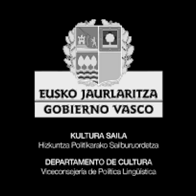Bixente Lohiague's collection from village to village
Further to a request by the Public University of Navarre, the BCI undertook a presentation of villages in the historic province of Lower Navarre. This research lasting 6 months was carried out by Bixente Lohiague. He presents his work in an interview dated February 2009.
What framework did you use to carry out this work?
What types of data were collected and using which method?
The method was relatively simple. We started by calling the different town-halls to explain the project. Then a meeting was planned with the local councillors or people who had carried out studies on the villages. During this meeting the entire project was explained so as to identify the objectives, then the people presented their villages. The data collected was very diverse: demographic, geographic (maps, and also the location with regard to mountains, rivers, etc), toponymic, climatic, historic and bibliographic. Emphasis was placed on the accessibility of information and the transparency of sources of information. This presentation was complemented by a wide graphic presentation (photographs) of the local heritage and surrounding countryside so as to provide a picture which is as close as possible to reality.
What resources did you use to help you in your research?
The BCI provides easy access to research files, so I was able to benefit from all kinds of reports: archaeological, historic, geological, etc. Often these documents were reports carried out by the DRAC (Regional Department of Cultural Affairs). There are already numerous monographs and non-specialist books which tell the history of villages, so my work consisted of summarising certain aspects of these books paying attention not to distort the information and making internet users want to continue their searches on these reports and other monographs. For some villages, there is work which has never been published and whose authors, through local authorities, gave me free access. It was also important, with regard to this idea of intangible heritage, to compare purely scientific reports with stories resulting from local oral tradition. People often gave their own opinions on my work, enabling me to successfully complete it.
How many municipalities were studied?
In all 75 municipalities took part. However that includes groups of municipalities like Ainhice-Mongelos for example, otherwise there was the equivalent of 90 former parishes.
Where can this information be accessed? In which languages?
This data will be available for consultation on the www.navarchivo.com website from the beginning of March, and also, although most probably in a more distant future, on the BCI's website (www.eke.org) or on site subject to appointment. These data will be available for consultation in Basque, French, Spanish and English.







